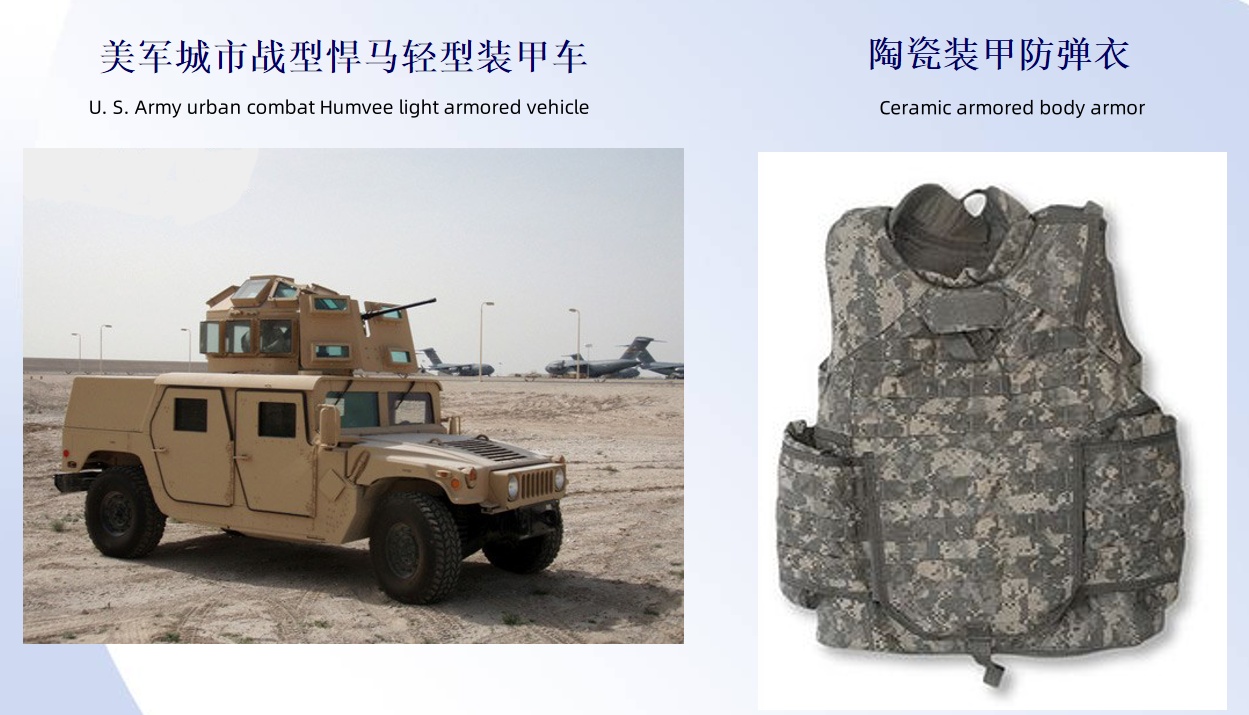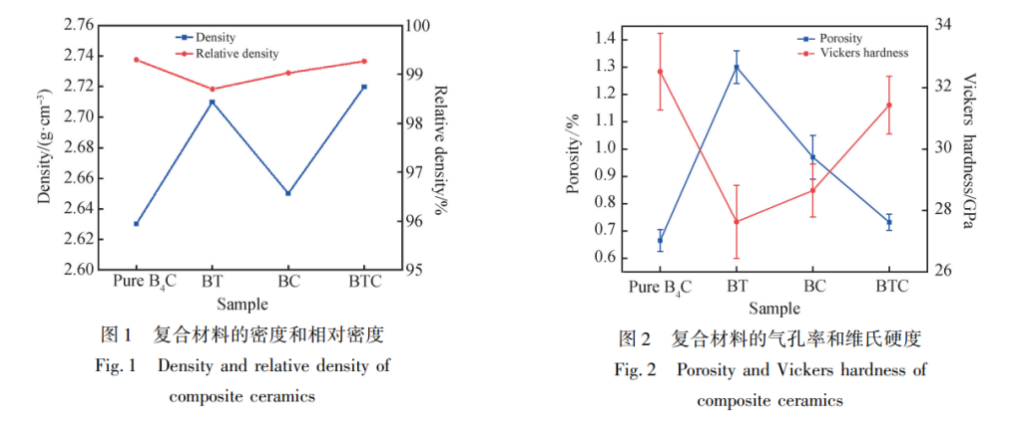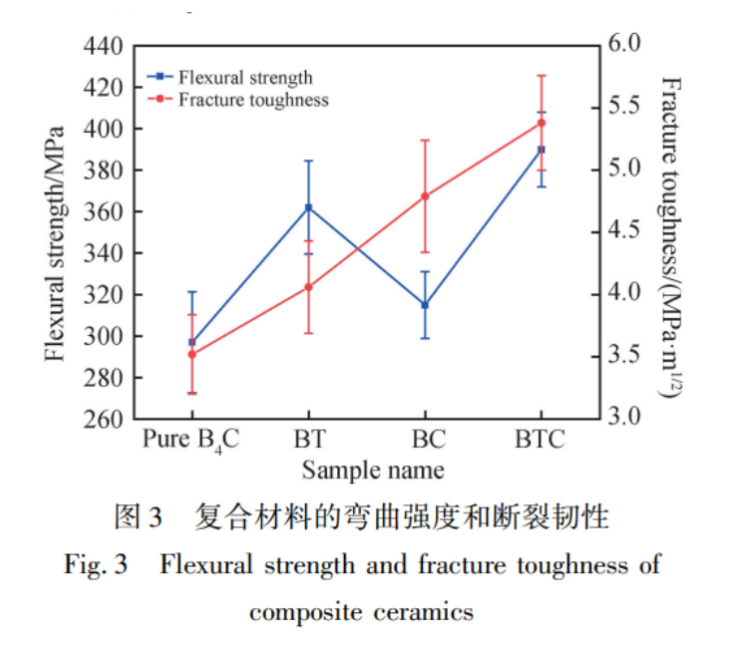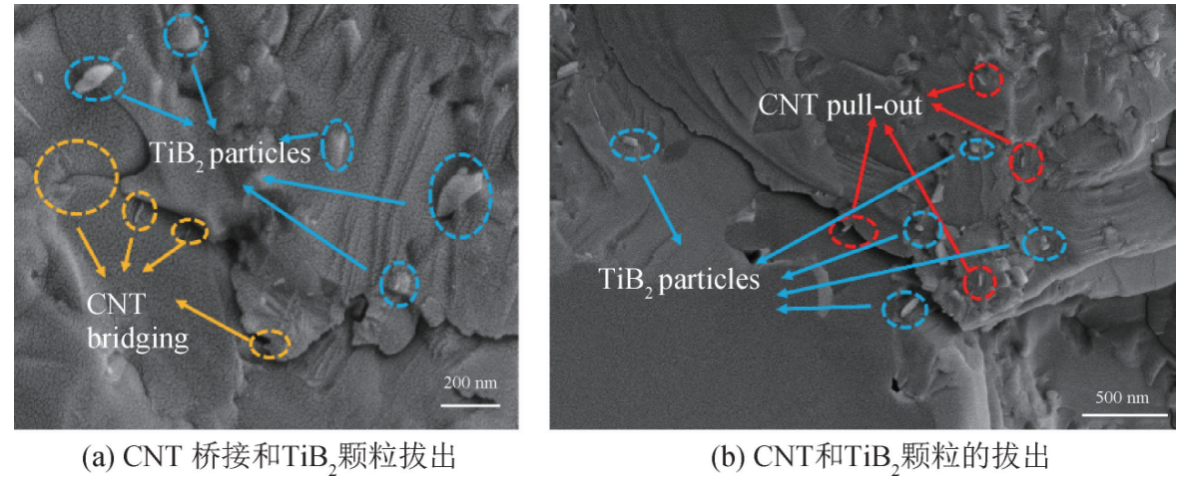
Boron carbide, also known as black (diamond), is the third hard material after diamond and cubic boron nitride, so it has become an important member of the superhard material family. As a new type of non-oxide ceramic material, boron carbide is widely used in energy, military, nuclear and bulletproof fields because of its high melting point, high hardness, low density, good thermal stability, strong chemical corrosion resistance and neutron absorption ability. Boron carbide bulletproof material has been widely used in individual body armor, bulletproof armor, armored helicopter armor web and police, civilian special vehicles and other protection fields. At present, boron carbide bulletproof materials are mainly prepared by sintering method. In the sintering process of pure boron carbide, there are usually problems such as high sintering temperature required for densification, low density of sintered ceramics and poor fracture toughness.

Because of its excellent properties, such as high hardness (~ 30 GPa), high melting point (2 450 ℃), low density (2 52 g/cm 3), high wear resistance, corrosion resistance and neutron absorption capacity, boron carbide (B4C) is widely used in ballistic armor, abrasive materials, wear parts and the nuclear industry. However, the application of B4C ceramics is severely limited due to their poor sintering property and inherent low fracture toughness. Boron carbide ceramic has high processing requirements, high temperature and high pressure sintering, poor toughness and brittleness, which is not conducive to the secondary use of bulletproof baffle, affecting the use effect of ceramic bulletproof baffle, further increasing its application cost, and limiting its wide application as a single-phase protective armor. Adding TiB2 and other additives to B4C can effectively improve the mechanical properties of B4C based ceramic materials.
Mechanical properties analysis: The density of pure boron carbide ceramic sample is 2.63 g/cm 3, and the relative density is 99.3%. With the addition of TiB2 and CNT, the density of the sample showed an increasing trend, while the relative density showed a decreasing trend. Among them, the addition of TiB2 phase can significantly increase the density of the ceramic sample, and the density of the sample BT and BTC are 2.71 g/cm 3 and 2.72 g/cm 3, respectively, which is mainly due to the density of the added phase TiB2 is 4.52 g/cm 3 It is much higher than the boron carbide ceramic matrix, resulting in an increase in sample density. The density of sample BC is 2.64 g/cm 3, which is slightly higher than that of pure boron carbide ceramics. Due to the presence of toughening phase, the relative densities of BT, BC and BTC decreased slightly compared with pure boron carbide (99.3%), which were 98.7%, 99.0% and 99.2%, respectively. The porosity and Vickers hardness of the sample are shown in Figure 2. It can be seen from the figure that with the addition of TiB2 and CNT, the porosity of the sample increases slightly, while the Vickers hardness decreases. In the LSI process, silicon is fused into the pores inside the prefabricated parts under the action of capillary force, and reacts with free carbon and B4C matrix to obtain highly dense composite materials. Since the hardness of TiB2 and CNT is lower than that of B4C, the Vickers hardness of samples with TiB2 and CNT added is reduced. It is worth noting that the porosity of sample BTC (0.73% ± 0.03%) is lower than that of sample BC(0.97% ± 0.08%) and BT(1.30% ± 0.06%), which is slightly higher than that of pure boron carbide ceramics (0.66% ± 0.04%), which may be due to The addition of CNT inhibits the growth of TiB2 [20], promotes the infiltration of molten silicon, makes the BTC sample more dense, and thus reduces the Vickers hardness of the BTC sample ((31.43 ± 0.94) GPa) by a small margin compared with pure boron carbide ceramics.

The bending strength and fracture toughness of the composite sample are shown in Figure 3. Compared with pure boron carbide (bending strength is (297 ± 24) MPa and fracture toughness is (3.52 ± 0.32) MPa· m1/2), the bending strength and fracture toughness of the sample increase with the addition of TiB2 and CNT. The bending strength and fracture toughness of sample BT were (362 ± 22) MPa and (4.06 ± 0.37) MPa· m1/2, respectively. The bending strength and fracture toughness of sample BC were (315 ±16) MPa and (4.79 ± 0.45). MPa·m 1/2, BTC has the highest bending strength and fracture toughness, which are (390 ± 18) MPa and (5.38 ± 0.38) MPa·m 1/2, respectively, which are 31% and 53% higher than pure boron carbide. This is mainly due to the superposition of TiB2 and CNT phases, which makes BTC ceramics obtain more excellent mechanical properties.

Due to the thermal stability of TiB2,TiB2 is mainly present in the form of particles in the sample BTC. TiB2 particles are uniformly distributed on the fracture surface. When the microcrack passes through TiB2 particles,TiB2 particles hinder the microcrack propagation, force the crack propagation path to produce deflection, consume the energy of crack propagation, and thus improve the fracture toughness of the sample.

The research on ceramic armor is an important content in the development and application of bulletproof composite materials. The ballistic protection effect of ceramic armor is better than that of ordinary armor steel. At present, passive armor reactive armor is the most widely studied and applied. In terms of bulletproof mechanism, reactive armor will generate kinetic energy after the armor material is stimulated by the bullet, and the kinetic energy will react on the bullet, while passive armor can resist the impact of the bullet through its own characteristics. Nowadays, the United States, Russia and other countries have used ceramics and composite materials to develop armor systems with better weight efficiency, and developed ceramic panel armor, which has been widely used. Composite material has good performance, because it combines the respective advantages of reinforcement material and matrix, and is also the fastest growing and most promising bulletproof material. Bulletproof materials have gradually diversified and composite development, and a variety of new bulletproof materials with high hardness and high toughness have emerged to deal with more complex protection problems. With the development needs of lightweight and high efficiency of armor system, the advantages of bulletproof ceramics and fiber reinforced bulletproof composite materials are more and more prominent, and the new composite ceramic bulletproof plate has incomparable advantages of traditional bulletproof plates.





